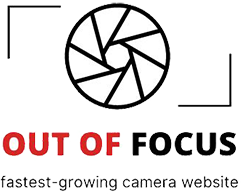
Master your Mac photography workflow with precision-engineered software designed specifically for Apple’s ecosystem. Whether you’re looking to transform your photos like a pro or simply organize your growing collection, Mac’s robust platform offers powerful solutions for every skill level. From Adobe’s industry-standard Creative Suite to cutting-edge alternatives like Capture One and Affinity Photo, today’s Mac photographers have unprecedented access to professional-grade tools that leverage Apple’s advanced hardware capabilities.
The seamless integration between Mac’s architecture and modern photo editing software ensures faster processing, smoother performance, and exceptional color accuracy – critical features that elevate both professional workflows and hobbyist projects. Recent innovations in AI-powered editing tools and native M1/M2 chip optimization have further revolutionized what’s possible on macOS, making complex editing tasks more intuitive and efficient than ever before.
Choose your software wisely – it’s not just about features and price points, but about finding tools that complement your creative vision and technical requirements while maintaining the stability and reliability that Mac users expect.

Professional-Grade Photo Editing Software for Mac
Adobe Creative Suite Options
Adobe’s Creative Suite stands as the gold standard in photography software, offering two powerhouse applications that work seamlessly on Mac: Photoshop and Lightroom. These applications provide photographers with powerful editing features while taking full advantage of macOS’s performance capabilities.
Photoshop excels at detailed image manipulation and complex editing tasks. It’s the go-to choice for photographers who need precise control over their edits, whether it’s removing unwanted elements, creating composite images, or applying advanced color corrections. The software’s layer-based workflow allows for non-destructive editing, meaning you can always revisit and adjust your changes without affecting the original image.
Lightroom, on the other hand, focuses on streamlining your photography workflow. It combines robust photo management capabilities with professional-grade editing tools. The application shines in handling large photo libraries, making it easier to organize, tag, and search through thousands of images. Its develop module offers comprehensive adjustment tools specifically designed for photographers, from basic exposure corrections to advanced color grading.
What makes these applications particularly valuable for Mac users is their integration. The Creative Cloud ecosystem allows for seamless file sharing between Photoshop and Lightroom, creating a flexible workflow that adapts to your editing needs. You can start organizing and making basic adjustments in Lightroom, then switch to Photoshop for detailed retouching, and have your changes automatically sync back to your Lightroom catalog.
Adobe’s subscription model, while sometimes controversial, ensures regular updates and new features specifically optimized for the latest Mac hardware. This includes support for Apple Silicon processors, delivering faster performance and better energy efficiency on newer Mac models. The Creative Cloud desktop app also simplifies installation and updates, making it easy to keep your software current.
Capture One Pro
Capture One Pro has earned its reputation as the go-to software for professional studio photographers, particularly those who rely heavily on tethered shooting capabilities. The software’s robust color editing tools and exceptional raw file processing make it a powerful alternative to Adobe’s offerings, especially for photographers working with medium format cameras or high-end DSLRs.
What sets Capture One apart is its superior tethering performance, allowing photographers to instantly view images on their Mac as they shoot. This real-time workflow is invaluable for commercial, fashion, and product photography where immediate client feedback is crucial. The software’s live view feature provides a seamless experience, with minimal lag and reliable connection stability that studio professionals depend on.
Color management is another area where Capture One excels. Its color editing tools offer precise control over colors and tones, with the ability to work in layers and create custom color profiles. The software’s advanced color wheels and skin tone editing tools are particularly beneficial for portrait and fashion photographers who need to achieve perfect skin tones and consistent color throughout their work.
The catalog management system in Capture One is well-suited for Mac users, offering flexible organization options without forcing photographers into a specific workflow. Sessions, a unique feature of Capture One, allow photographers to organize shoots into self-contained units – perfect for client work and maintaining organized archives.
While the learning curve can be steeper than some alternatives, Capture One’s customizable interface allows photographers to create workspaces that match their specific needs. The software’s raw processing engine produces notably sharp images with excellent detail retention, and its advanced masking tools make local adjustments precise and intuitive.
For Mac users serious about studio photography, Capture One Pro represents a professional-grade solution that justifies its premium price point through its superior tethering capabilities, color accuracy, and robust workflow tools.

Budget-Friendly Alternatives That Deliver Results
Affinity Photo
Affinity Photo has emerged as a formidable challenger to Adobe Photoshop, offering Mac users a powerful, professional-grade photo editing solution at a fraction of the cost. Unlike subscription-based software, Affinity Photo requires just a one-time purchase, making it an attractive option for photographers looking to maximize their investment.
The software’s interface will feel familiar to Photoshop users while maintaining its own distinct identity. It supports non-destructive editing, works with RAW files, and includes advanced features like focus stacking, panorama stitching, and HDR merge. The program’s persona system, which switches between different workspace modes for various tasks, helps streamline your workflow whether you’re doing basic touch-ups or complex photo manipulation.
Mac users will appreciate Affinity Photo’s optimization for Apple Silicon, delivering exceptional performance on newer machines. The software fully supports the latest macOS features and integrates seamlessly with other Apple technologies, including support for the iPad version of Affinity Photo for cross-device workflows.
Where Affinity Photo truly shines is in its comprehensive toolset for professional photo editing. From advanced selection tools and masks to sophisticated color grading and precise adjustment layers, it provides everything needed for high-end photo manipulation. The software also includes a robust batch processing system and extensive plugin support, though its plugin ecosystem isn’t as vast as Photoshop’s.
While there might be a slight learning curve for those deeply entrenched in Adobe’s ecosystem, Affinity Photo’s comprehensive documentation and active user community make the transition manageable. For Mac photographers seeking a powerful, cost-effective editing solution without compromising on features, Affinity Photo stands as a compelling choice.
Luminar Neo and ON1 Photo RAW
Artificial intelligence has revolutionized photo editing, and both Luminar Neo and ON1 Photo RAW stand at the forefront of this transformation. These powerful Mac-compatible editors combine traditional editing capabilities with cutting-edge AI features that can dramatically streamline your workflow.
Luminar Neo excels in AI-powered enhancements, offering tools like AI Sky Replacement, which can swap skies while maintaining natural-looking reflections and color harmony. Its Portrait Background Removal tool uses machine learning to create clean cutouts with remarkable precision, while the Face AI technology automatically enhances facial features without making portraits look artificial. The unique Atmosphere AI tool can add realistic fog, mist, or haze to your images, creating mood and depth that would typically require complex masking techniques.
ON1 Photo RAW takes a different approach, focusing on providing a complete photo organization and editing solution. Its AI-powered features include NoNoise AI for intelligent noise reduction, Portrait AI for automated portrait enhancement, and Sky Swap AI for replacing skies. What sets ON1 apart is its non-destructive editing workflow and the ability to work without cloud subscription requirements, making it an attractive option for photographers who prefer local storage solutions.
Both applications offer layer-based editing, extensive preset collections, and intuitive interfaces designed specifically for Mac users. While Luminar Neo tends to focus more on creative AI transformations, ON1 Photo RAW provides a more comprehensive suite of traditional editing tools alongside its AI capabilities. The choice between the two often comes down to whether you prioritize creative AI effects or prefer a more traditional editing approach with AI assistance.
Specialized Photography Tools
HDR and Panorama Software
For Mac users looking to create stunning HDR images or sweeping panoramas, several powerful software options stand out. Whether you’re just starting with HDR photography techniques or seeking to perfect your panoramic shots, these tools offer sophisticated features while maintaining user-friendly interfaces.
Aurora HDR, developed in collaboration with Trey Ratcliff, leads the pack for HDR processing on Mac. Its AI-powered tone mapping and intuitive layer-based workflow make it particularly effective for challenging scenes with extreme contrast ranges. The software excels at producing natural-looking results without the overdone “HDR look” that plagued earlier tools.
For panorama creation, PTGui Pro remains the go-to choice for serious photographers. While it comes with a steeper learning curve, its advanced stitching algorithms handle complex scenarios beautifully, from multi-row panoramas to 360-degree spherical images. The automatic control point generation is remarkably accurate, saving hours of manual alignment work.
Affinity Photo offers both HDR merging and panorama stitching capabilities at a fraction of the cost of specialized software. While it might not match the advanced features of dedicated tools, it provides excellent results for most situations and integrates seamlessly with other editing workflows.
For those preferring a more streamlined approach, macOS’s built-in Photos app includes basic HDR merging and panorama stitching features. While not as comprehensive as standalone applications, it handles straightforward scenarios well and costs nothing extra.
A notable mention goes to Hugin, a free open-source alternative that produces professional-quality panoramas. Though its interface isn’t as polished as commercial options, it offers powerful features including exposure and color correction across frames, making it particularly valuable for budget-conscious photographers.

Photo Organization and Asset Management
For photographers working with extensive image collections, having reliable software to organize your photo library is essential. Mac users are fortunate to have several robust options at their disposal, each offering unique approaches to digital asset management.
Apple Photos, included with macOS, provides a solid foundation for casual photographers. It offers facial recognition, location tagging, and intelligent search capabilities, making it easy to find specific images in larger collections. The software seamlessly integrates with iCloud, ensuring your photos are backed up and accessible across all Apple devices.
For professional photographers handling larger collections, Adobe Lightroom remains the industry standard. Its powerful catalog system allows for detailed metadata management, keyword tagging, and custom collections. The software excels at handling RAW files and includes advanced sorting features like color coding and star ratings.
Capture One Pro offers a compelling alternative for professional photographers, particularly those shooting with medium format cameras. Its sessions-based workflow and powerful tethering capabilities make it ideal for studio photographers. The catalog system provides flexible organization options and superior RAW processing.
For those seeking a more affordable solution, Mylio Photos offers an innovative approach to photo management. It creates a unified library across devices without requiring cloud storage, and its AI-powered organization tools help sort through years of photos effortlessly.
ACDSee Photo Studio for Mac provides a comprehensive solution combining asset management with editing capabilities. Its database-driven approach allows for quick searching and sorting, while its facial recognition and GPS tagging features help maintain order in large collections.
When choosing photo management software, consider factors like library size, workflow requirements, and integration with other tools. Many applications offer free trials, making it worth experimenting with different options to find the perfect fit for your needs.

Mac-Exclusive Photography Apps
Apple Photos and Extensions
Apple Photos comes pre-installed on every Mac, offering a robust foundation for managing and editing your photography. While it might seem basic at first glance, this native software packs surprising power, especially when enhanced with third-party extensions.
The built-in editing tools cover essential adjustments like exposure, contrast, and color correction, while featuring intelligent auto-enhancement options that work remarkably well for quick fixes. The organizational capabilities, including facial recognition and location-based sorting, make it easy to maintain a structured photo library.
Where Apple Photos truly shines is its extensibility. Through the Photos Extensions ecosystem, you can seamlessly integrate powerful third-party editing tools without leaving the familiar Photos interface. Popular extensions include Luminar AI for advanced AI-powered enhancements, Pixelmator Pro for sophisticated editing capabilities, and DxO PhotoLab for professional-grade RAW processing.
These extensions effectively transform Apple Photos into a customizable editing platform. For instance, you can apply Luminar’s sky replacement tools or access Pixelmator’s advanced healing brush directly within Photos. The integration is so smooth that it feels like using native features rather than add-ons.
For many Mac users, this combination of Apple Photos and carefully chosen extensions provides a complete photography workflow solution without the need for additional standalone applications.
Mac App Store Gems
The Mac App Store holds several hidden photography gems that deserve more attention. PhotoBulk stands out as a fantastic batch processing tool, allowing you to watermark, resize, and optimize multiple images simultaneously. It’s perfect for photographers who need to process large sets of photos quickly without compromising quality.
For those interested in time-lapse photography, Time Lapse Assistant offers an intuitive interface for creating stunning sequences. Its smart exposure adjustment feature helps maintain consistent lighting across frames, making it easier to achieve professional-looking results.
RAW Power deserves special mention for its powerful RAW processing capabilities. Built by former Apple engineers, it integrates seamlessly with Photos and offers advanced adjustment tools that rival professional software. The app’s ability to recover highlight and shadow detail is particularly impressive.
Pixelmator Pro, while not exactly hidden, remains underappreciated. This affordable alternative to Photoshop offers powerful photo editing features, including AI-powered tools for image enhancement and object removal. Its native Mac design makes it incredibly responsive and resource-efficient.
For quick edits, Filters for Photos provides a curated collection of high-quality filters and adjustments that integrate directly with macOS Photos. It’s perfect for photographers who want to enhance their images without leaving their default photo management app.
These apps demonstrate that valuable photography tools don’t always need to come with hefty price tags or complex interfaces.
Choosing the right photography software for your Mac ultimately depends on your specific needs, skill level, and budget. For professionals requiring comprehensive editing capabilities and seamless integration with other creative tools, Adobe Lightroom and Photoshop remain industry standards, though they come with a subscription cost. Capture One Pro offers a powerful alternative with superior tethering capabilities and color editing tools, making it especially appealing for studio photographers.
For enthusiasts looking to streamline your editing workflow without breaking the bank, Affinity Photo provides exceptional value with its one-time purchase model and professional-grade features. Luminar Neo and DxO PhotoLab excel in specialized areas like AI-powered editing and noise reduction, respectively.
Budget-conscious photographers and beginners should consider free options like GIMP or Apple Photos, which offer surprising capability for basic editing tasks. As you progress in your photography journey, you can always upgrade to more advanced solutions.
Remember that most professional software offers free trials, so take advantage of these to test which interface and tools best match your workflow. Whether you’re a professional photographer managing thousands of client images or a hobbyist looking to enhance your vacation photos, there’s a Mac-compatible solution that will meet your needs and help bring your creative vision to life.






















